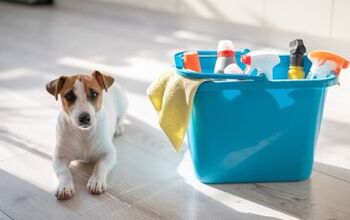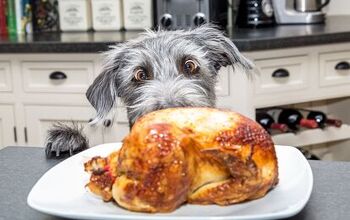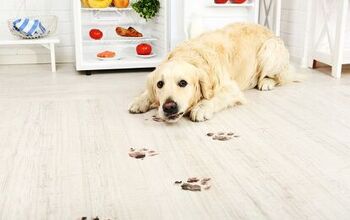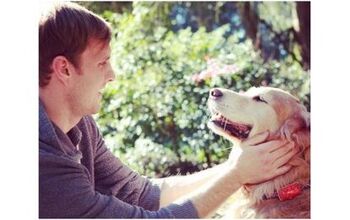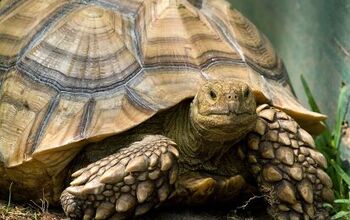Are Candles Safe for Pets?

As the holiday season approaches, many of us will bring our festive décor alive with candles to create that warm, welcoming ambiance. However, as pet parents, should we incorporate candles into our holiday decorating plans? Are candles safe for pets?
In this article, we shed light on the potential risks of using candles in a pet-friendly home. Plus, we share precautions you can take to keep your pets safe. Spoiler alert: Owning a pet doesn’t mean avoiding candles entirely – there are safe solutions that will allow you to embrace your love of a candle’s soft glow!
Let’s get started…
Is Candle Wax Toxic to Pets?
The biggest concern we often see related to using candles around a pet is that the candle itself may be toxic. But is candle wax toxic to pets? The short answer is, “Rarely.” But that doesn’t mean that they don’t introduce some risks.
Most quality candles today are made from pet-safe materials, like paraffin, soy, or beeswax. However, there is the risk that the company may use synthetic oils for fragrances to provide that welcoming smell. This can cause respiratory problems for your pet, both causing short-term breathing issues and contributing to long-term respiratory ailments.
Some candles (generally cheaper, mass-produced votives, pillar candles, and tea lights) were made with a metal-cored wick that contains lead. The U.S. Consumer Product Safety Commission (CPSC) banned the sale of lead-cored wicks in candles in 2003. While this regulation is in place to protect you with new purchases, be cautious and check any older candles you may have sitting around the house before lighting.
In terms of toxicity, candles are obviously not designed for consumption. Most candles don’t include a high enough concentration of chemicals or essential oils to cause serious concern, especially if you have a larger dog. However, you should contact your vet if you suspect your dog may have been nibbling on your candle. In addition to the potential for chemical toxicity, the wax could cause an intestinal blockage. If your dog ate the wick, it could also lead to severe complications if it becomes tangled in the digestive tract.
Of course, the most significant danger associated with candles in a house with pets is the flame and hot wax. If your dog or cat knocks the candle over, they could suffer severe burns. This is why any candle, even one considered “pet-safe,” should be kept out of your pet’s reach.
What Candles Are Safe for Cats and Dogs?
Speaking of pet-safe candles, do they exist? Yes! Several companies are making great products that are mainly pet-safe. However, even these aren’t entirely safe for your pet as the risk of a burn still exists.
For example, Pet House Candle is well-known for making non-toxic, eco-friendly candles with 100% plant-based wax and a 100% cotton wick. These candles are safe to burn around your pets, assuming they are kept up and out of their reach.
When choosing candles to burn around the house, here are a few basic rules:
- Choose only unbleached 100% cotton or wood wicks
- The safest candles are those made from soy, coconut, or plant-based wax
- Avoid candles with dyes, phthalates, formaldehyde, parabens, and other potentially harmful additives
- Select candles with a wide, secure base that is less likely to be knocked over
6 Candle Safety Tips for Pets
If you are a candle-loving pet parent, you’re not alone. The following tips will help you strike the perfect balance between enjoying your favorite candle and keeping your furry friend safe.
Consider Your Choice of Candle Carefully
As we already addressed, choose the candle that you are using carefully. By selecting candles made with all-natural ingredients, free from toxic additives and harmful chemicals, you can minimize the chances of your pet feeling ill from burning the candle in the room. Plus, as a bonus, it will be safer for you to breathe in, too!
While the brightly colored seasonal candles you often see on display in big box stores may look festive and inviting, the dyes used to achieve those colors can be harmful. Instead, try searching for an all-natural, chemical-free candle in a decorative container to add that holiday cheer.
Avoid Candles and Scented Products with Heavy Essential Oils
Another key consideration when searching for a pet-safe candle is the intensity of the scent and the materials used to achieve it.
While some essential oils are beneficial for our pets, many are considered toxic or unsafe. If you are searching for a scented candle (or liquid potpourri), pet parents need to consider the possible risk of essential oil poisoning and which scents to avoid.
Some examples of those that could be hazardous to dogs or cats include:
- Cinnamon Oil
- Citrus Oil
- Peppermint Oil
- Pine Oils
- Wintergreen
- And many more…
Before incorporating any product that includes essential oils into your home, it is recommended that you first carefully research or consult a professional to ensure that the products you are purchasing are safe.
Additionally, when selecting a candle, consider the strength of the scent. While a strongly scented candle may not be toxic to your pet, we must remember that their sense of smell is significantly stronger than ours. A candle strongly scented to us could be entirely overwhelming for them. By sticking to something lightly scented, you can find a product that is enjoyable for everyone.
Keep Candles on a Secure, Elevated Surface
Pay careful attention to where you place your candle when burning it. The best place to burn a candle will vary depending on your pet and their personality.
If you have a happy dog who is often wagging their tail excitedly, coffee tables and lower counters may be unsafe. Instead, place your candle on a surface high enough off the ground that it is well out of your pup’s reach. Pay extra careful attention if you have a dog with a knack for counter-surfing.
Cats can make this process a little more challenging. Why? They are often skilled climbers with the ability to reach shelves and countertops that would be well out of reach for their canine counterparts. Consider the available climbing routes in the house. Do you have a shelf blocked by an obstacle or difficult for your cat to reach? That would be the ideal place.
There are situations where you may want a candle out in a less-than-perfect situation. For example, you may want to place a candle on your dining room table as part of your table décor. Try to limit the likelihood of your pet accessing the candle, and never leave them unsupervised, even for a second! Accidents can happen in the blink of an eye.
Always Keep a Window Open
If you are concerned that a candle may be a little too strong for your pet after lighting it, there is an easy solution. Open a window and allow the room to air out. Depending on the air circulation in your room, you may want to consider using a small fan to get the air moving, allowing the scent to be safely dissipated.
Like people, some animals will be more sensitive to scents than others. Opening a window, even when burning a pet-safe candle, is a great precautionary step to take.
Watch for Signs of Trouble
As a responsible pet parent, you should always pay attention to your pet’s body language – even if you are burning a pet-friendly candle. Take note of any signs your pet may be uncomfortable or acting “off.” This may range from minor annoyance from the strong scent to signs of toxicity, such as:
- Drooling
- Excessive panting
- Difficulty breathing
- Pawing at their face or mouth
- Uncoordinated gait or difficulty walking
- Confusion
- Vomiting
- Redness or irritation around the mouth, tongue, or eyes
- Trying to escape the room
Extinguish your candle or open a window at the first sign that your pet is uncomfortable. Consider taking them to another room that is closed off from where the candle has been burning. Monitor them closely to ensure the signs of trouble don’t progress into something more serious. If at any time you are concerned about your pet’s behavior, contact your veterinarian and explain the situation.
Store Candles Safely Out of Reach
The risk to your pet doesn’t end when your candle is safely snuffed out (although that greatly reduces the chance of something terrible happening). Some pets may find the smell enticing and feel the need for a little taste test.
If you have followed the other recommendations, you can rest assured that your plant-based wax candle isn’t poisonous. Unfortunately, that doesn’t mean your pet is free from harm. If your pet has ingested wax, pieces of the candle container, or the wick, they are at risk for gastrointestinal problems ranging from a sick stomach and diarrhea to a potentially life-threatening blockage.
Try to note how much of the candle your pet may have eaten.
A small piece of wax is unlikely to cause serious trouble and can be monitored at home. But don’t dismiss the problem entirely. Monitor your pet closely for signs of trouble like vomiting, loss of appetite, constipation, or lethargy. These are all red flags of a bigger problem and warrant a call to the veterinarian.
If you suspect there is a chance that they have eaten larger pieces or dangerous items, like sharp pieces of metal and plastic, contact your veterinarian ASAP. They will be able to run tests to better understand what exactly (and how much) your pet has ingested and whether it is causing any problems in the digestive tract. They may be able to induce vomiting, bringing up the material from the candle, or monitor your dog to ensure that they pass it safely.
Final Thoughts: Candles and Pets
Whether you want to include a candle in your holiday décor while keeping your pet safe or simply burn a candle to mask those pesky “pet smells,” there ARE options available to enjoy the gentle glow of a candle without creating unnecessary risks for your companion.
Choose a pet-safe candle that is made from plant-based wax, avoiding those scented with potentially toxic essential oils like peppermint and pine oils. Set your candle up on a secure surface out of their reach and supervise your pet the entire time it burns. When you’re done, ensure your candle is stored safely where your pet can’t reach it.
These simple precautions may be the difference between a festive holiday scene and a trip to your local emergency vet!
Join the PetGuide community. Get the latest pet news and product recommendations by subscribing to our newsletter here.

Britt Kascjak is a proud pet mom, sharing her heart (and her home) with her “pack” which includes her husband John, their 2 dogs – Indiana and Lucifer – and their 2 cats – Pippen and Jinx. She has been active in the animal rescue community for over 15 years, volunteering, fostering and advocating for organizations across Canada and the US. In her free time, she enjoys traveling around the country camping, hiking, and canoeing with her pets.
More by Britt






